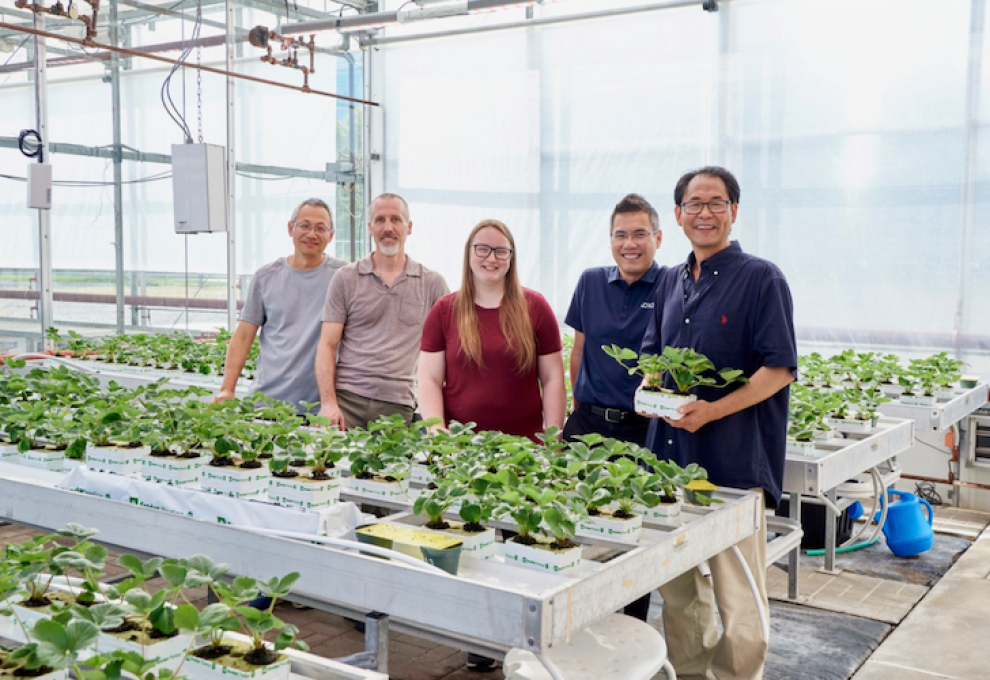
Two University of Guelph-led research teams aiming to change the way fresh produce is grown in Canada have entered the second phase of the Homegrown Innovation Challenge, a $33-million challenge prize to grow berries out-of-season and at scale in Canada. The initiative is funded and delivered by the Weston Family Foundation.
Dr. Mike Dixon and Dr. Youbin Zheng, both professors in the School of Environmental Sciences (SES) within the Ontario Agricultural College, are leading teams exploring sustainable and cost-effective ways to extend the growing season of berries.
Their teams are among 11 selected nationwide to develop small-scale, proof-of concept berry-growing solutions. Figuring out how to grow berries out of season — sustainably and competitively — will unlock solutions for myriad other fruits and vegetables.
Dixon and his team have received $691,730 to develop a controlled environment agriculture (CEA) system that manages strawberry production to meet market demands and consumer preferences.
Their system will combine state-of-the-art greenhouse practices with vertical farming methods in a hybrid production strategy, increasing overall productivity and stabilizing supply of both berries and plants.
“To stabilize these factors and reduce the variability in supply and quality, we propose to grow strawberries with solutions we’ve developed to grow food in space,” Dixon says.
Specialized LED lighting will be used to extend the growing season. Adjusting the light intensity and spectra, producers can enhance traits preferred by consumers, such as flavour and shelf life for strawberries, he adds.
The project team includes SES researchers Dr. Thomas Graham and Dr. Michael Stasiak and experts from Mucci Farms, North America’s largest grower of controlled-environment strawberries.
Zheng and his team have received $999,918 to use artificial intelligence (AI) and smart automation to take the guesswork out of providing optimal growing conditions for berries.
“Growing berries in controlled environments requires balancing many interconnecting parameters, such as lighting, air humidity and temperature, rootzone dissolved oxygen, water and nutrients,” Zheng says. “If one factor changes, the others change too. It’s beyond the capacity of conventional greenhouse practices to manage precisely and effectively.”
“Reducing costs and growing high-quality, high-yield fruit means maximizing profits for producers,” says Zheng.
Zheng’s team includes AI engineers from Koidra, an intelligent automation company, and horticulturalists and engineers from Agriculture and Agri-Food Canada and the Ontario Ministry of Agriculture, Food and Rural Affairs.
Source: University of Guelph May 6, 2024 news release

Add new comment